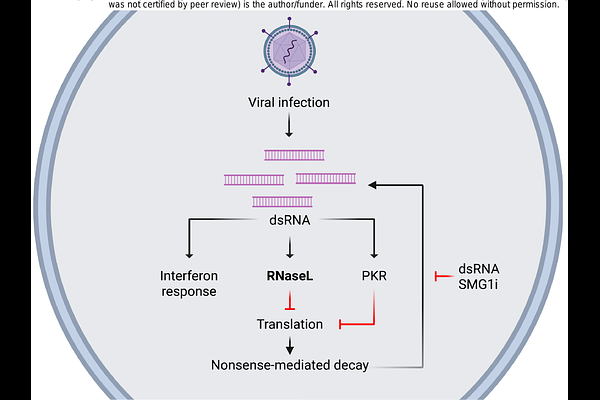Nonsense-mediated decay controls a negative feedback loop in innate immune sensing

Nonsense-mediated decay controls a negative feedback loop in innate immune sensing
Boudreault, S.; Rivera-Lopez, Y.; Ferretti, M. B.; Bonner, J.; Jacobs, B.; Lynch, K. W.
AbstractNonsense-mediated decay (NMD) is an mRNA decay pathway which degrades potential harmful transcripts that contain premature termination codons. However, NMD\'s importance also extends to the control of isoform abundance under physiological conditions. During viral infection, NMD is inhibited through numerous mechanisms; however, NMD has been shown to have both antiviral as well as proviral activities, raising further questions into the role and control of NMD during viral infection. These observations have led us to investigate the potential involvement of NMD in dsRNA sensing as a mechanism that might explain these discrepancies. Using EIF4A2 exon 10B inclusion as an example of AS-NMD isoform accumulating during viral infection, we show that dsRNA sensing inhibits NMD. This effect is correlated with translational blockade and is driven primarily by RNaseL activation, and by PKR in the absence of RNaseL activation. Surprisingly, NMD promotes the induction of IFN-{beta} as well as interferon-stimulated genes, and this effect is upstream of IRF3 translocation to the nucleus. NMD also promotes RNaseL activation, suggesting NMD directly controls dsRNA sensing. Therefore, inhibition of NMD upon dsRNA sensing provides a negative feedback loop that contributes to shaping the innate immune sensing pathways.